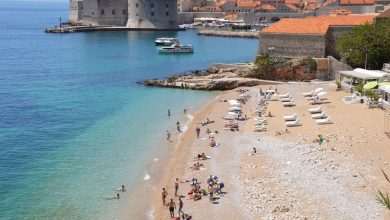The beautiful Lapidary in Ston is opened to the public today. It is located in the Episcopal palace, and if you visit it, it will tell you a story about the history of Ston since Roman times to VI and XVII century.
Ston lapidary consists valuable remains of the Church of the Assumption of Mary from the IX century and the church of St. Michael from X / XI century;
The history of Ston is saved in this Lapidary, and it stayed there for centuries and years despite the earthquakes, wars, and other difficulties.

Lapidary and gift shop are open every day from 9 am to 4 pm hours. Sundays from 11 am to 4 pm.
Ston is a little Medieval town with whose history reaches back as far as the 14th century. It is a small town with the longest stone wall in Europe (5,5km), with quiet narrow streets, ancient noble houses and with traces of ancient cultures.
Its former value as a ‘salt city’ gets confirmed even today in the plants of the oldest active salt-works in the world. These saltworks have remained faithfull to the tradition and to the natural way of salt production which has not changed since remote ages.
The gulf of Mali Ston with places Mali Ston, Hodilje, Luka, Duba has a clean and natural environment. It has been well-known for its mussel and oysters-growing farm since Roman times,and the oysters from Ston (Ostrea edulis),as an acknowledged natural aphrodisiac has made this region world-famous.
Not far from Ston is the beautiful Bay Prapratno with its centuries old olives tress, Mediterrean macchia thickets and clean sandy beaches and the site of one of the lovelist camps in this region.
In Ston channel protected from the wind settled, two small towns Kobaš and Broce known for nautical tourism. The Pelješac peninsula has, since ancient times, been adorned with grape vine plantations, and wine production has a long tradition and is one of the most important commercial activities.



